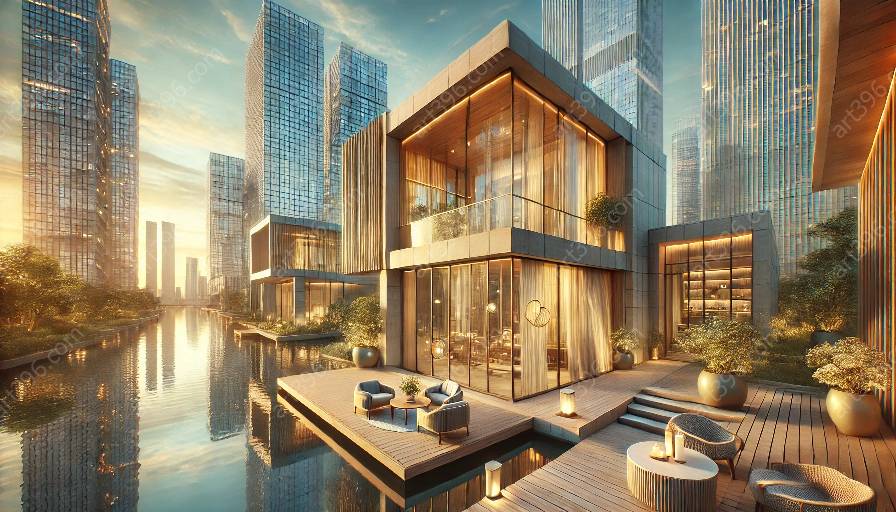Natural materials have been a fundamental element in architectural and design practices for centuries. Architects and designers incorporate natural materials into their projects in various creative ways, connecting the built environment with the natural world. This article explores the significance of natural materials, the methods of integration, and their impact on modern architecture.
The Significance of Natural Materials in Architecture and Design
Natural materials, such as wood, stone, bamboo, and earth, play a crucial role in the built environment. They offer a unique aesthetic appeal, sustainability, and a connection to the surrounding landscape, fostering a sense of harmony and balance. Additionally, natural materials contribute to a healthier indoor environment by allowing for better air quality, thermal regulation, and acoustics.
Integrating Natural Materials into Architectural Designs
Architects and designers incorporate natural materials into their designs through careful consideration of the building's form, function, and context. Wood, for example, may be used for structural elements, cladding, or interior finishes, creating a warm and inviting atmosphere. Stone, on the other hand, can be employed for its durability and timelessness, adding a sense of permanence to the structure.
Moreover, the use of bamboo as a sustainable and versatile material has gained popularity in modern architectural projects, offering strength, flexibility, and a striking visual presence. Adobe, rammed earth, and straw bale construction techniques are also re-emerging as viable options, reflecting a return to traditional building methods that minimize the environmental impact.
Innovative Building Methods and Sustainability
The incorporation of natural materials has led to innovative building methods focused on sustainability and environmental responsibility. From modular construction using timber to the use of geopolymer concrete made from natural minerals, architects and designers are experimenting with new ways to reduce the carbon footprint of buildings and enhance their resilience to climate change.
Furthermore, the concept of biophilic design, which seeks to integrate natural elements into the built environment, has prompted the exploration of living walls, green roofs, and passive design strategies that maximize natural light and ventilation, thereby reducing energy consumption.
The Impact on Modern Architecture
The integration of natural materials and sustainable building methods has significantly influenced modern architecture, leading to a shift towards eco-friendly and contextually responsive designs. Architects and designers now prioritize the use of locally-sourced and renewable materials, emphasizing the connection between the built environment and its ecological surroundings.
As a result, natural material incorporation has become a defining characteristic of contemporary architectural aesthetics, reflecting a conscious effort to create spaces that evoke a sense of wellbeing and environmental stewardship. This approach has not only redefined the visual language of architecture but has also contributed to the evolution of sustainable design practices.





























































